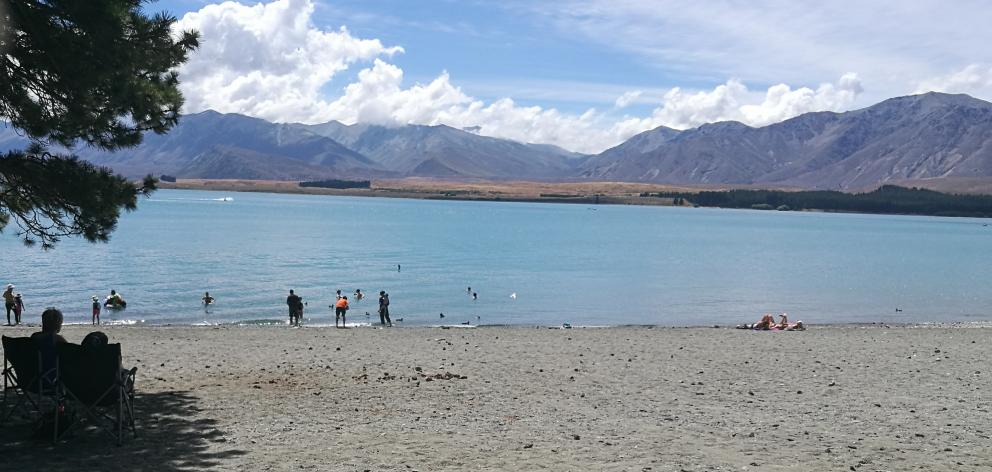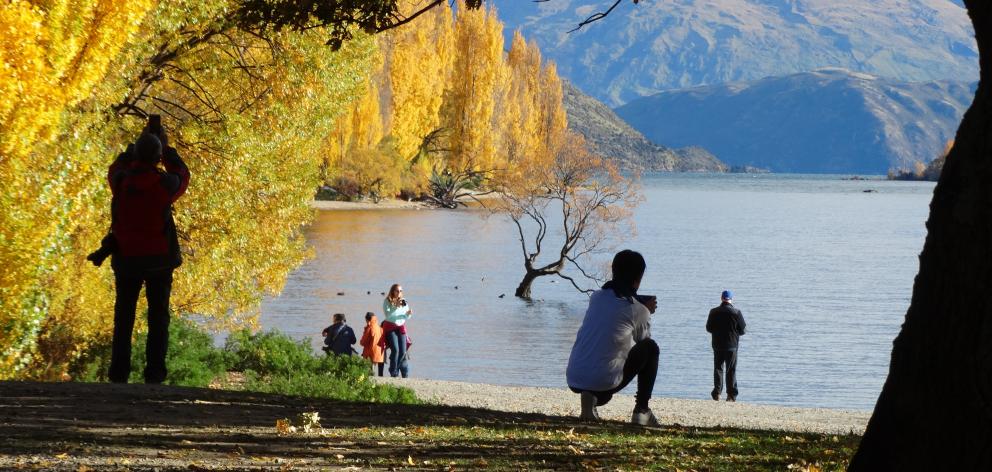
It will soon be more expensive to visit New Zealand as tourists face a new $25-$35 tax and others face higher visa fees under proposals aimed at raising money for infrastructure, conservation and immigration costs.
- Queenstown could be test for tourist levy
- Editorial: High cost of visiting New Zealand
- High costs could threaten visitor numbers: Tourism boss
Tourism Minister Kelvin Davis set out a new visitor levy today, saying the extra $57 million to $80 million a year would be split between tourism infrastructure and conservation. It is likely to be in place by the end of next year.
Many seeking to come to visit, work or move to New Zealand will also face a hike in visa fees and immigration levies from November this year under changes expected to raise more than $160 million over the next five years.
That will include a proposed 54% increase for those on work visas - up from $355 to $547.

Visitor visas will go up by 10% from $151 to $166 and immigration levies for those moving to New Zealand will increase by 43% – from $580 for most migrants to $830.
Davis said he was aware of the concerns of the tourism sector and airlines about such a measure but it would not add to the delays at the border and would not include the major short-haul markets of Australia or the Pacific Islands.
"We don't believe the financial burden should rest solely on the shoulder of New Zealanders, we do believe visitors should pay their fair share."
He said the proposed levy and revenue of up to $80 million in its first year was only 1% of the average visitor spend.
He pointed to communities that would benefit such as Tekapo, which attracted high visitor numbers but had a low ratepayer base. It gets about 800,000 visitors a year - 170 for each ratepayer.

Conservation Minister Eugenie Sage said tourist numbers were expected to increase to 5.1 million by 2025 and six out of the top 10 attractions for tourists in New Zealand were in the natural environment. Many huts on the main walks and tramps were already booked solid through the main season and funding was needed to invest in more facilities and maintaining those areas.
Bosses who take on foreign workers will also have to pay more in employer accreditation fees.
The combined changes will mean a person on a visitor visa pays up to $76 more than at present, and someone from a visa-waiver country will pay $39 more. A family of four on either a visitor visa or visa waiver will pay about $160 more than now.
Australians and most Pacific Islanders would be exempt from the vistor levy as will children under 2 years old.
The Ministry of Business, Innovation and Employment is consulting on the proposals until July 15. There is likely to be some resistance from the tourism sector and those concerned the extra costs will deter visitors who already pay steep airfares to visit.

Business could also be concerned the steeper visa fees will make it harder to get overseas workers in some sectors.
Davis said it was "fair" to expect tourists to contribute to the country they were enjoying.
"It's only fair that they make a small contribution so we can help provide the infrastructure they need and better protect the natural places they enjoy.
"Many regions are struggling to cope and urgently need improved infrastructure, from toilet facilities to carparks."
The new $25-$35 levy is expected to apply to international visitors coming to New Zealand for less than a year and will be collected as part of a visa fee or through a proposed Electronic Travel Authority (ETA) system for those from visa waiver countries.
The visa fee changes are expected to kick in in November.

Although most will increase, student visas will drop by 6.5% and those on "group visitor" visas – such as tour groups – will have a 45% reduction.
Those on working holidays and the Recognised Seasonal Employers' scheme will be exempt from fee increases.
MBIE said the changes in visa fees were to reflect the different costs in processing different visas. About $120 million from the revenue would be spent on visa processing services over the next five years and $40 million on border security and regulating immigration agents.
The ETA is also a new development and is being consulted on. It will mean changes for those from countries with which New Zealand has visa-waiver agreements, requiring them to go online to get a travel authority before arriving, rather than simply turning up as at present.
Many other countries already use it and it is expected to cost about $9 per application.

It is aimed to speed up the process at the border by allowing travellers who do not need visas to be screened in advance for border and immigration risks. It is expected that an ETA will be valid for two years for repeat visitors.
Davis said the previous National Government had ignored calls for a regular income stream to help local councils pay for infrastructure.
Immigration Minister Iain Lees-Galloway said the proposed overall increase in fees and levies would help fund measures announced in this year's Budget such as extra immigration staff at the border and increased funding for the Immigration Advisers Authority.
"The proposed increase in visa fees and levies is a small part of the total cost of visiting, working or studying in New Zealand. New Zealand charges remain competitive compared to other countries such as Australia, the United Kingdom and Canada."
Comments
This is incredibly short sighted and gives an unwelcome first impression of NZ. Entry, departure taxes, visas, everything is done on conditions of reciprocity. As a result of this change every country will review their entry conditions for NZ travellers and in most cases will toughen them and introduce new tit for tat taxes. Unwanted and unnecessary bureaucracy. Tourists contribute 12 billion to the economy annually and freedom campers ironically spend the most as they're here longer. We're really doing this for a paltry 32 mill a year? So what if we have to fund facilities for tourists, we get to use them too and then at least they get made.












